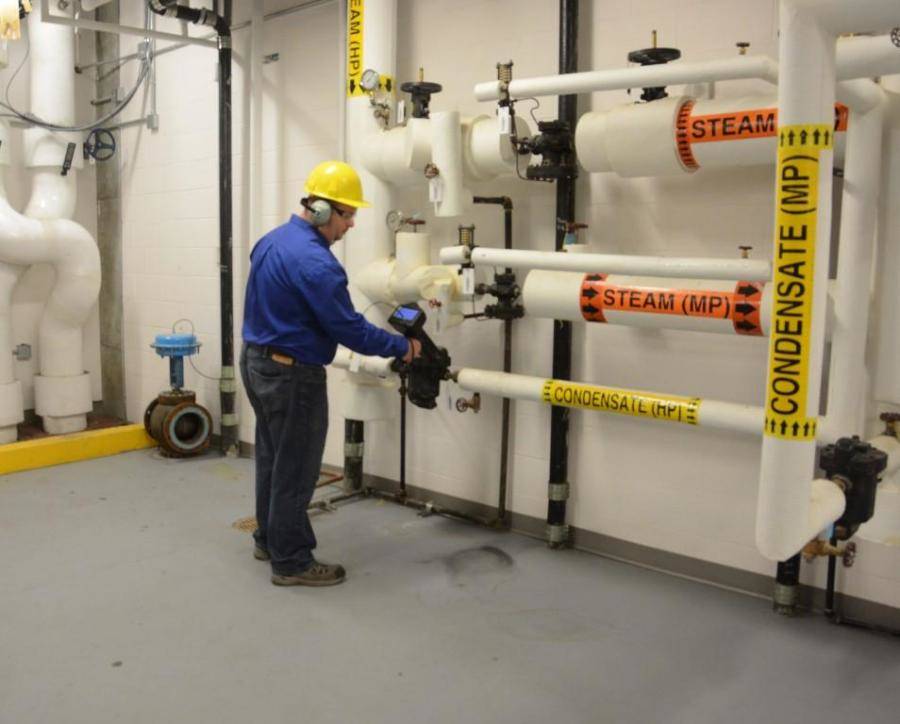
High energy prices and global competition dictate a need to reduce energy waste and improve system efficiencies. A major contributor to waste and inefficiency is leaks: both to atmosphere and through valves and steam traps. Experts say that as much as 20% of the steam generated at the central boiler is lost to leaking or failed steam traps. The purpose of a successful steam trap inspection program should be to repair any faulty steam traps and steam leaks, reduce energy waste and repair any failed steam traps and steam leaks that impact product quality.
Planning for Success
Before beginning any steam traps inspection, it will be helpful to think a few things through. First, walk the area to identify and tag every steam trap. The tag should include a number, and all information should be noted, such as the manufacturer, type of steam trap, orifice size and the purpose of the steam trap.
Testing Steam Traps with Ultrasound
Before testing with ultrasound, it is recommended to take temperature readings with a simple spot radiometer first. Not only will the temperature let the inspector know if steam is coming to the trap or not, but the temperature can also be used to estimate the steam pressure.
The most important item that the inspector will need to know is which type of trap is being inspected. This will determine what the steam trap should sound like once contact has been made with the ultrasound instrument.
Physical contact between the steam trap and the ultrasound instrument is necessary in order to “hear” how the steam trap is performing. If using an ultrasound instrument that has frequency tuning, adjust it to the recommending frequency setting of 25kHz. If it does not have frequency tuning, it is more than likely set to 38kHz. Regardless of the type of trap, the placement of the contact probe or stethoscope module attachment on the ultrasound instrument will always be at the discharge orifice of the steam trap, since turbulence is created on the outlet side of the steam trap when the steam trap releases condensate.
Once contact has been made, adjust the sensitivity/volume on the instrument until the sound of the trap can be heard.
When inspecting steam traps with ultrasound, it is important to exercise patience. Make contact at the discharge orifice and wait for the steam trap to cycle. If the temperatures have been checked, and the trap has not cycled for approximately one minute, move on to the next steam trap. If the steam trap has not cycled within one minute’s time, it may be difficult to know when the trap may cycle again, but if the temperatures are ok and there’s no indication of a plugged condition, proceed to the next steam trap to be tested.
Reporting the Results
It is also important to document the findings. Not only should the operating condition of the steam trap such as failed, leaking, or ok be reported, but also the loses from the failed or leaking steam traps. To generate a Steam Loss Report in the Ultratrend DMS software from UE Systems, the inspector will need to know: Type of Trap, Orifice Size, Inlet & Outlet Temperature, Operating Condition and how much it is costing to generate 1000lbs (450 kg.) of steam. When using UE Systems’ Ultraprobe 10000 or Ultraprobe 15.000, you can enter this information onboard the instrument as the steam trap survey is taking place.
Meer zien